Plotting Dataset Extents
Posted on 2019-10-31Back at the start of September we released some historical statistics and, almost as an afterthought, mentioned the new extents plots. In this post we explore those dataset extents plots in more detail.
Extent Plots; What Are They?
Put simply, every dataset that GeoSeer indexes follows various standards which say that the datasets should declare a rectangular bounding box which represents its spatial extent, i.e., where does the dataset cover? So if it's a dataset covering Germany, it should declare a box covering Germany, but because Germany isn't a rectangle, the box will overlap with surrounding countries to various degrees, including all of tiny Luxembourg.
What we've done is taken all of those extents boxes and stacked them all up, overlapping them to create what we call extent plots which show how many datasets cover a given area. As you can imagine there are a lot of caveats to this process (as well as to the dataset extents themselves, like the Luxembourg example above), these are covered in detail on the datasets extent plots page.
What do they show?
One important caveat to remember is that the plots only show dataset extents that are entirely within the plot extent. The exception to this is the Global plot where we're also excluding the 191,052 global datasets (about 10% of all datasets) as they add nothing to the plot. It's interesting to note that ~10% of all datasets are global though.
So the plots show where in the world there are lots of spatial datasets available via WMS (Web Map Service), WFS (Web Feature Service), WCS (Web Coverage Service), and/or WMTS (Web Map Tile Service). There are two colour schemes, we're mostly using the spectral one here because it brings out more detail even if it's not very aesthetically pleasing.
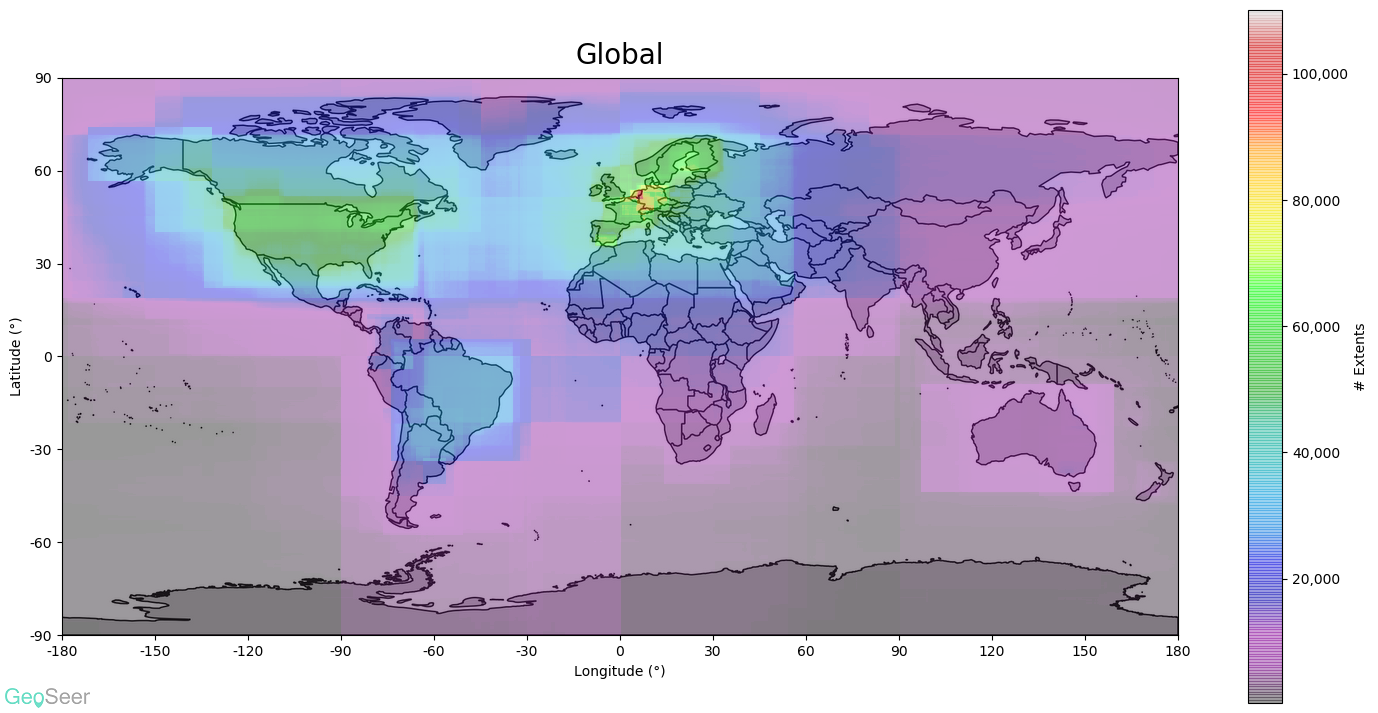 Starting with the global plot (above) it's obvious that the EU's INSPIRE directive has had a considerable effect, particularly in central Europe. The USA and Brazil also have considerable coverage.
Starting with the global plot (above) it's obvious that the EU's INSPIRE directive has had a considerable effect, particularly in central Europe. The USA and Brazil also have considerable coverage.
Looking closer at West Europe (below), it becomes apparent that the rectangular nature of the extents are causing lots of overlaps in the region of the Netherlands/Belgium/Germany tripoint (apparently called the Vaalserberg), hence the very high values there. That said, there's still a lot of datasets covering the region.
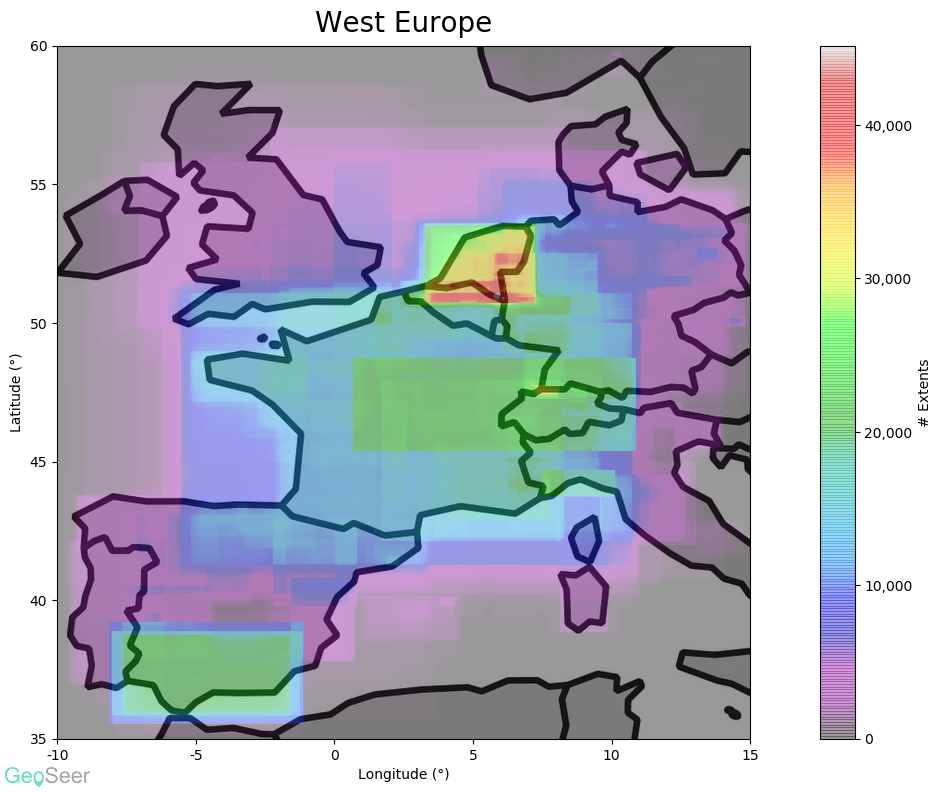
Zooming even closer to one specific country such as the UK (below), it's possible to see a lot of nuance that's swamped out at the smaller scales. It's now clear that Wales has excellent national coverage compared to England (which is mostly just the South East, not even London), and certainly Scotland (just Glasgow and Edinburgh).
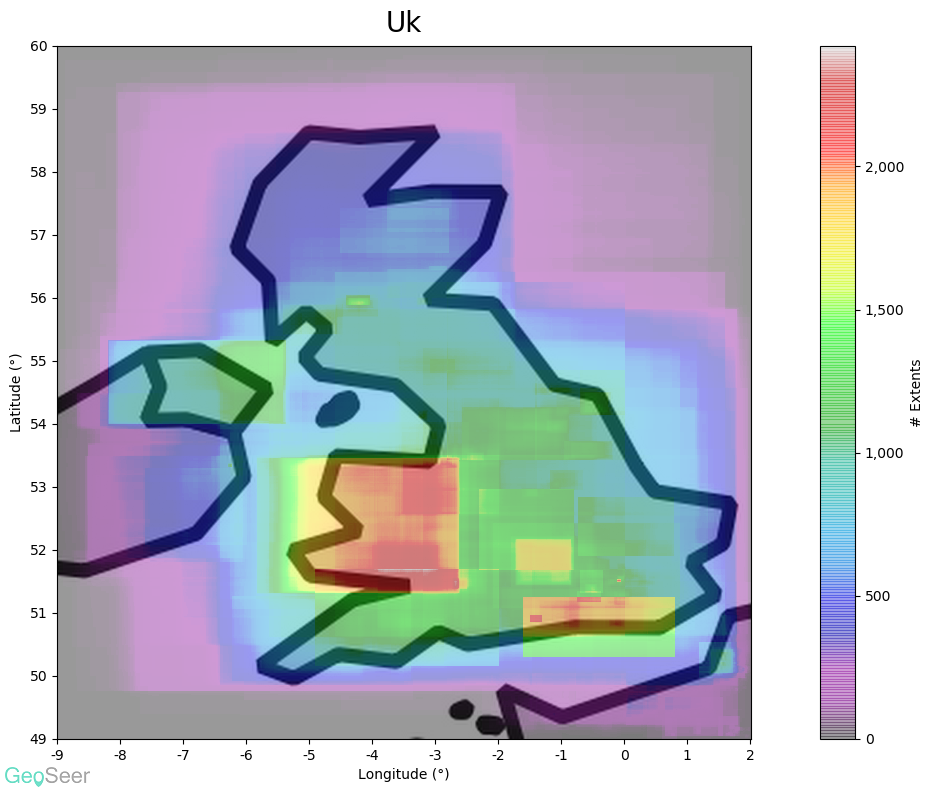
Bad data
Do you notice anything odd about this plot of Africa (apart from it being green)?
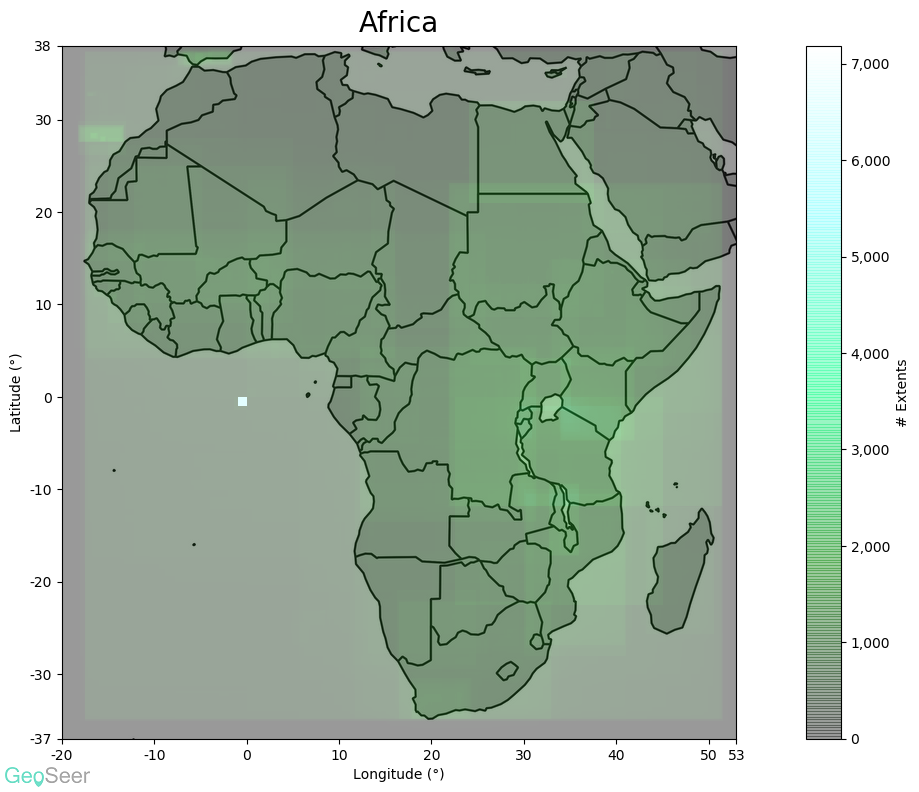
Yep, there's a very large number of datasets covering a tiny area off the west coast of Africa. Why? As you've probably guessed it's because 6,527 datasets are wrongly declaring their extent as being entirely around 0, 0 (lat/lon). This floods out Africa which unfortunately doesn't have many datasets in the first place. So we filter these bad datasets out of the plot extents to get the below. Now we can see that east Africa has a respectable number of datasets covering it, as do the Canary Islands.
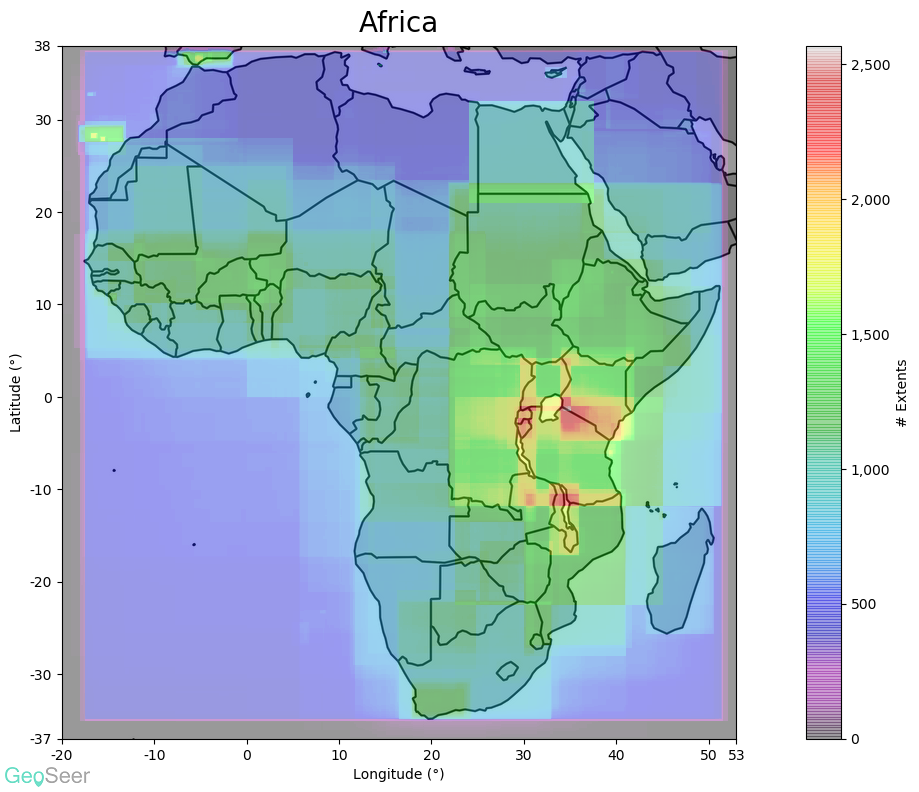
Technical; How We Make Them
We use Python to create these plots by reading in all of the WGS84 (coordinate system) bounding boxes from the GeoSeer index, stacking them together with NumPy as a two dimensional array, and then plotting them out via MatPlotLib. NumPy does the magic of summing the extents together remarkably quickly so we can rebuild them every month with the updates.
Closing Remarks
There are other interesting insights that can be gleaned from these, take a look at the Datasets Extent Plots page for more. This is a good case study of the sort of cool stuff you can do with Python, and GeoSeer Datasets, for example if you have a research itch you need to scratch.Because we like to share, the plots are available for use under the CC-BY 4.0 license, which means you can do anything you want with them but please link back to GeoSeer.
Finally, if there's any particular area you think would make an interesting plot, let us know and we'll take a look.